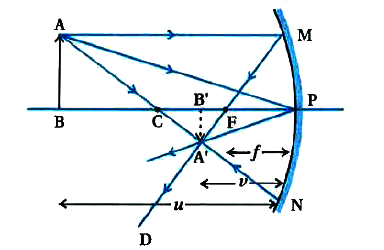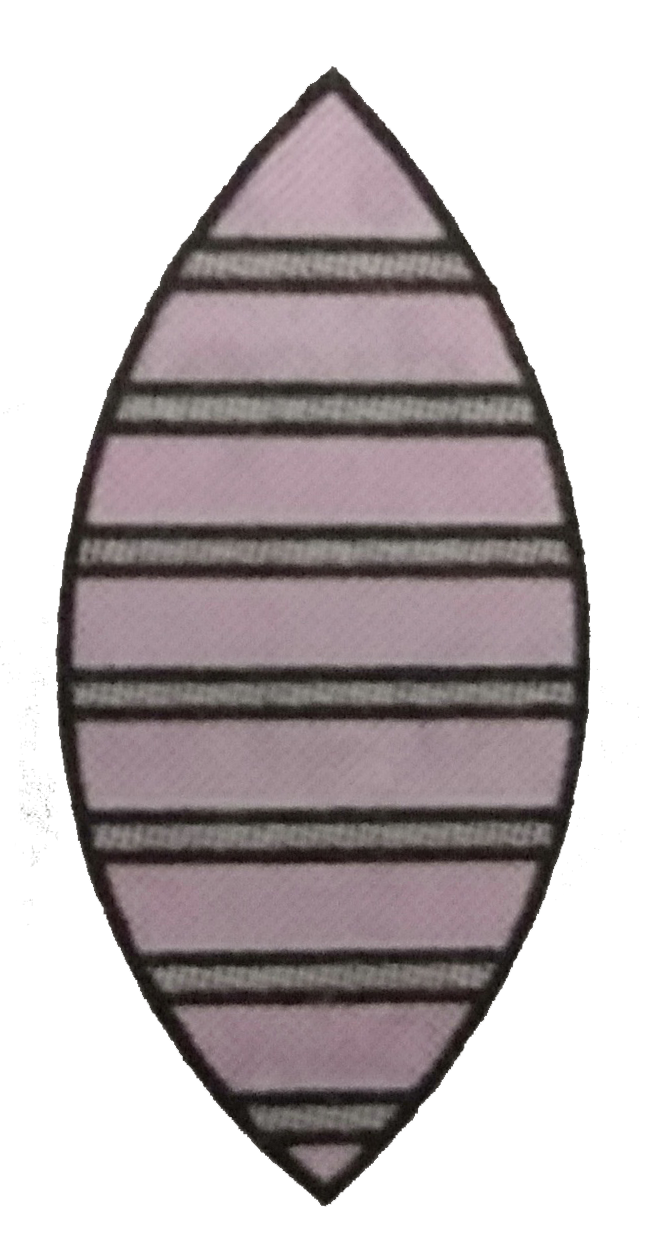How is it convenient to obtain image by lens practically?Solution in Gujrati
To find the image of an object by a lens, we cai in principle, take any two rays emanating fron a point on an object, trace their paths using thi laws of refraction and find the point where the refracted rays meet or appear to meet). Ir practice, however it is convenient to choose any two of the following rays.

(i) A ray emanating from the object parallel to the principal axis of the lens after refraction passes through the second principal focus F. (in a convex lens) or appears to diverge (in a concave lens) from the first principal focus F.
(ii) A ray of light, passing through the optical centre of the lens, emerges without any deviation after refraction.
(iii) A ray of light passing through the first principal focus (for a convex lens) or appearing to meet at it (for a concave lens) emerges parallel to the principal axis after refraction.
It must be remembered that each point on an object gives out infinite number of rays. All these rays will pass through the same image point after refraction at the lens.
Topper's Solved these Questions
- RAY OPTICS AND OPTICAL INSTRUMENTSBook:KUMAR PRAKASHANChapter:RAY OPTICS AND OPTICAL INSTRUMENTSExercise:SECTION - A (TRY YOURSELF)
Explore 74 Videos
- RAY OPTICS AND OPTICAL INSTRUMENTSBook:KUMAR PRAKASHANChapter:RAY OPTICS AND OPTICAL INSTRUMENTSExercise:SECTION-B (NUMERICALS)(NUMERICAL FROM TEXTUAL ILLUSTRATIONS)
Explore 17 Videos
- MOVING CHARGES AND MAGNETISMBook:KUMAR PRAKASHANChapter:MOVING CHARGES AND MAGNETISMExercise:SECTION D (MCQs ASKED IN COMPETITIVE EXAMS)
Explore 34 Videos
- SAMPLE QUESTION PAPER Book:KUMAR PRAKASHANChapter:SAMPLE QUESTION PAPER Exercise:PART-B SECTION-C
Explore 5 Videos
Similar Questions
Give range of wavelength of visible light.
View SolutionSuppose that the lower half of the concave mirror.s reflecting surface as shown in figure is covered with an opaque (non-reflective) material. What effect will this have on the image of an object placed in front of the mirror ?

View SolutionElectric charge Q having mass M moves on a circular path of radius R with velocity →v, perpendicular to uniform magnetic field B. When a particle completes one revolution, work done by the field is _______
View SolutionTwo charges –q and +q are located at points (0, 0, –a) and (0, 0, a), respectively.
(a) What is the electrostatic potential at the points (0, 0, z) and (x, y, 0) ?
(b) Obtain the dependence of potential on the distance r of a point from the origin when r/a>>1 .
(c) How much work is done in moving a small test charge from the point (5,0,0) to (–7,0,0) along the x-axis? Does the answer change if the path of the test charge between the same points is not along the x-axis?
View SolutionA student obtains a blurred image of a distant object on a screen using a convex lens. To obtain a distinct image on the screen he should move the lens
View SolutionA lens shown in Fig. 6(b).75 is made of two different materials. A point object is placed on the principal axis of the lens. How many images will be obtained ?

View Solutionलेंस प्रतिबिम्ब कैसे बनते है
View SolutionName the lens used to obtain the image on a screen.
View SolutionName the lens used to obtain the image on a screen.
View SolutionThe image of a candle formed by a convex lens is obtained on a screen. Will full size of the image be obtained if the lower half of the lens is painted completely opaque?
View SolutionRay diagrams showing images obtained by concave lens.
View Solutionएक उत्तल लेंस द्वारा बना मोमबत्ती का प्रतिबिम्ब, एक परदे पर प्राप्त किया जाता है। प्रतिबिम्ब का पूरा आकर तब भी बन जाता है जल्द लेंस का निचला आधा भाग काला रंग दिया जाता है।
View Solutionउत्तल लेंस से प्रतिबिम्ब कैसा बनता है
View SolutionHow is it convenient to obtain image by reflection from spherical mirror ?
View SolutionA converging lens is used to obtain an image of an object placed in front of it. The inverted image is formed between F_(2)and2F_(2) of the lens. Draw a ray diagram to illustrate the formation of the image obtained.
View Solution

